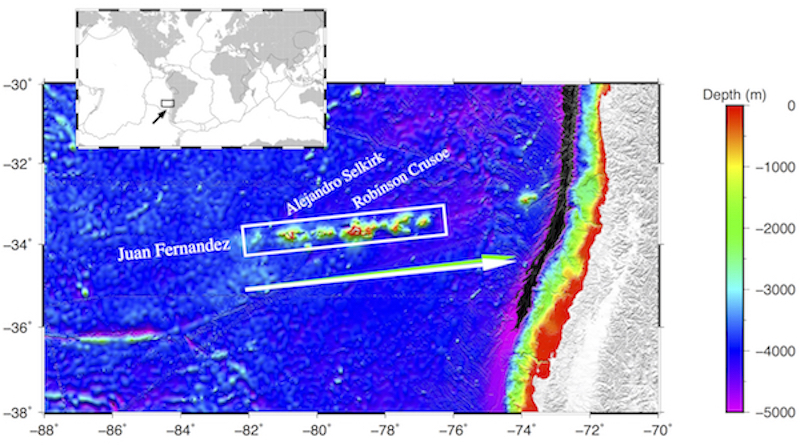Volcanic Hotspots Are Relative Slowpokes, Study Finds

To follow the chain of Hawaiian Islands is to follow the history of a volcanic hotspot back in time: At the Big Island, volcanoes actively spew lava and create new land, while to the northwest of Kauai, long-dead volcanoes have been eroded and submerged by the sea.
Scientists have long hoped to use such hotspots and the trail of volcanoes they leave behind to track the movement of the tectonic plates that creep slowly across the Earth’s surface. But there's one wrinkle: The hotspots themselves move, and recent research suggested they moved too much to be useful for such tracking.
A new study detailed in the journal Geophysical Research Letters finds, however, that they move by only a small amount. This means they can be used to understand plate motion over tens of millions of years, as well as the structure of the Earth's mantle, the layer between the crust and the planet's liquid outer core. [Explosive Images: Hawaii's Kilauea Erupts for 30 Years]
"We want to understand why these volcanoes are there" and what they are "telling us about what's happening very deep in the Earth's interior," study author Richard Gordon, a geophysicist at Rice University, told Live Science.
Hotspots are places where plumes of hot, buoyant rock from deep in the Earth's mantle plow to the surface in the middle of a tectonic plate. They move because of the convection in the mantle that also pushes around the plates above (convection is the same process that happens in boiling water).
Gordon and his colleagues set out to see how much hotspots move by using a new data set and by only looking at the last 40 million or so years, the period over which the data is thought to be most reliable.
They compared the rates of movement of 56 hotspots, grouped by tectonic plate, to a global average. On average, they moved about 0.1 inch (3 millimeters) per year, much less than the 1.3 inches (33 millimeters) or so found by other studies. (For comparison, the Pacific plate moves at the relative clip of 3.9 inches, or 100 millimeters, per year compared to its hotspots.)
Sign up for the Live Science daily newsletter now
Get the world’s most fascinating discoveries delivered straight to your inbox.
"I think that the question of how fast the mantle plumes are moving sideways, or laterally, with respect to each other has been a very long-lived question and I think this paper does a good job of showing that for the period of time that we have the best data … we don't see much motion," geophysicist Jason Morgan, a visiting scholar at Harvard who wasn't involved with the study, said.
The slow movement of the hotspots suggests they can be used to track plate motion and that the material in the deep mantle where plumes originate may be more viscous and moving more slowly than scientists previously thought.
Whether the study is enough to persuade those who think the hotspots are moving more quickly remains to be seen, but Gordon said he hopes it will help lead the field to a consensus.
Original article on Live Science.

Andrea Thompson is an associate editor at Scientific American, where she covers sustainability, energy and the environment. Prior to that, she was a senior writer covering climate science at Climate Central and a reporter and editor at Live Science, where she primarily covered Earth science and the environment. She holds a graduate degree in science health and environmental reporting from New York University, as well as a bachelor of science and and masters of science in atmospheric chemistry from the Georgia Institute of Technology.









